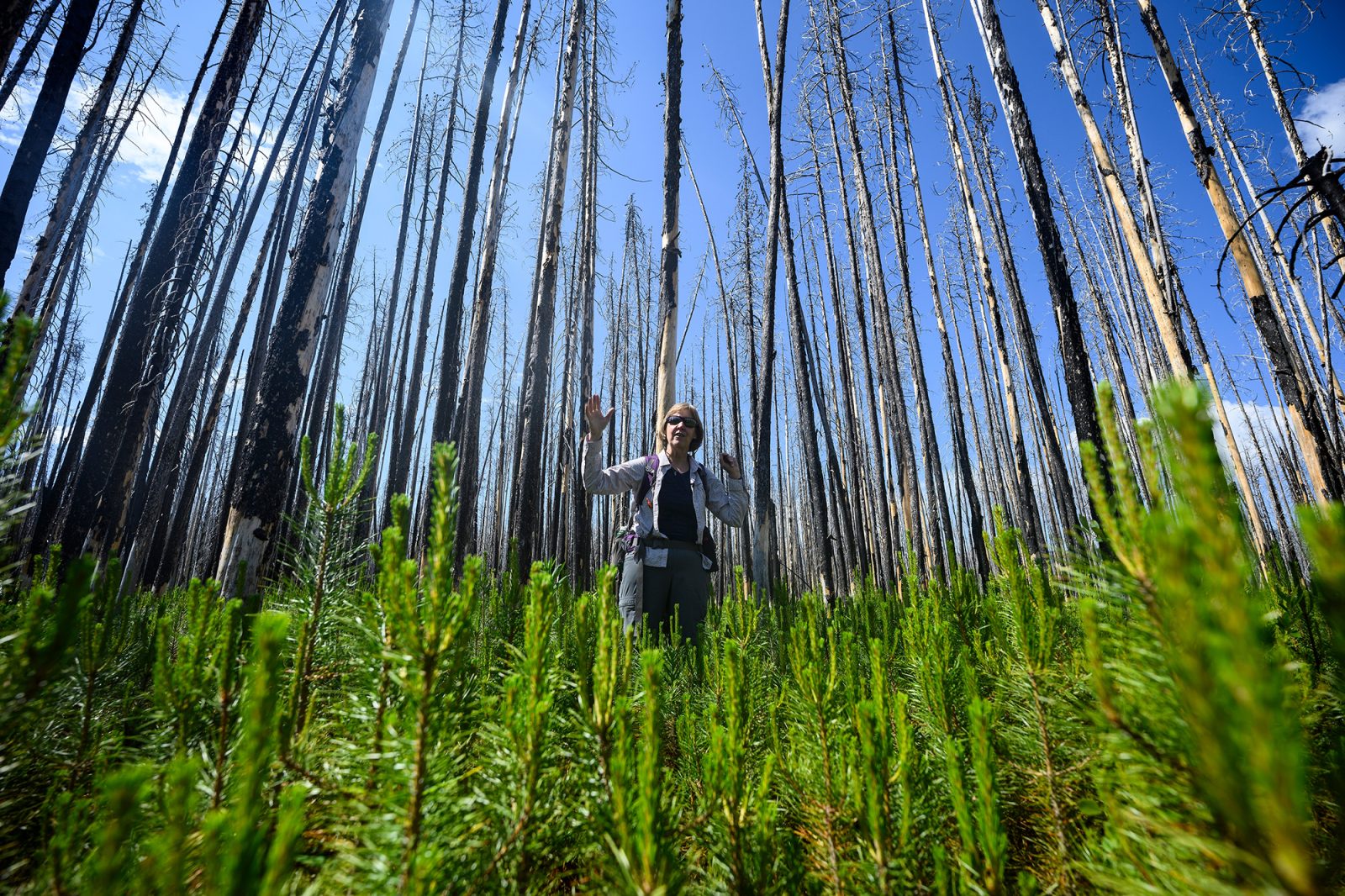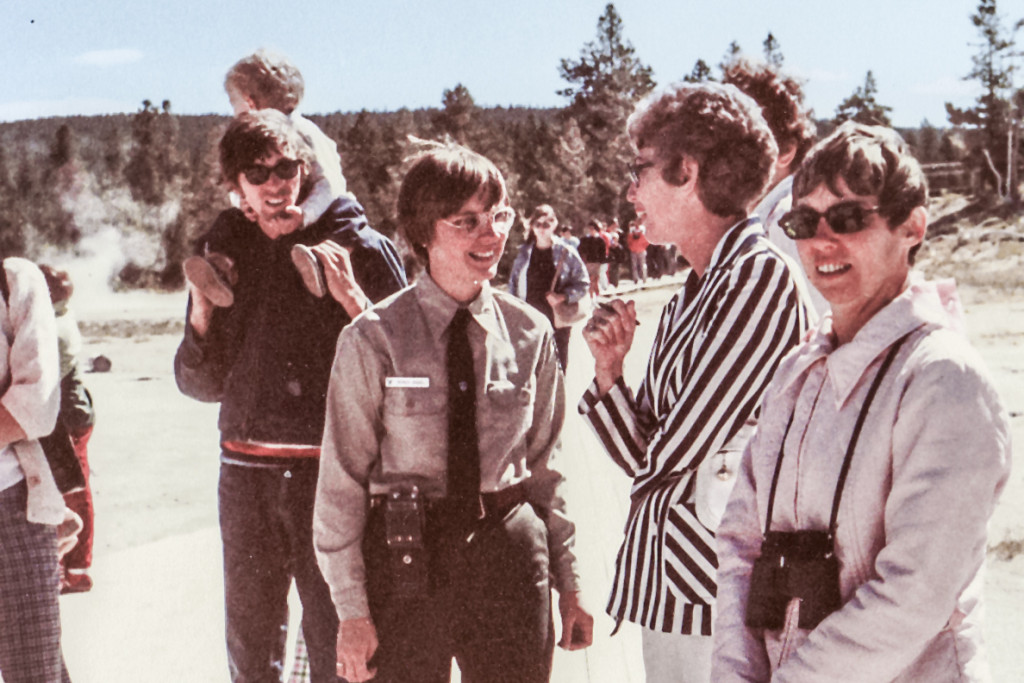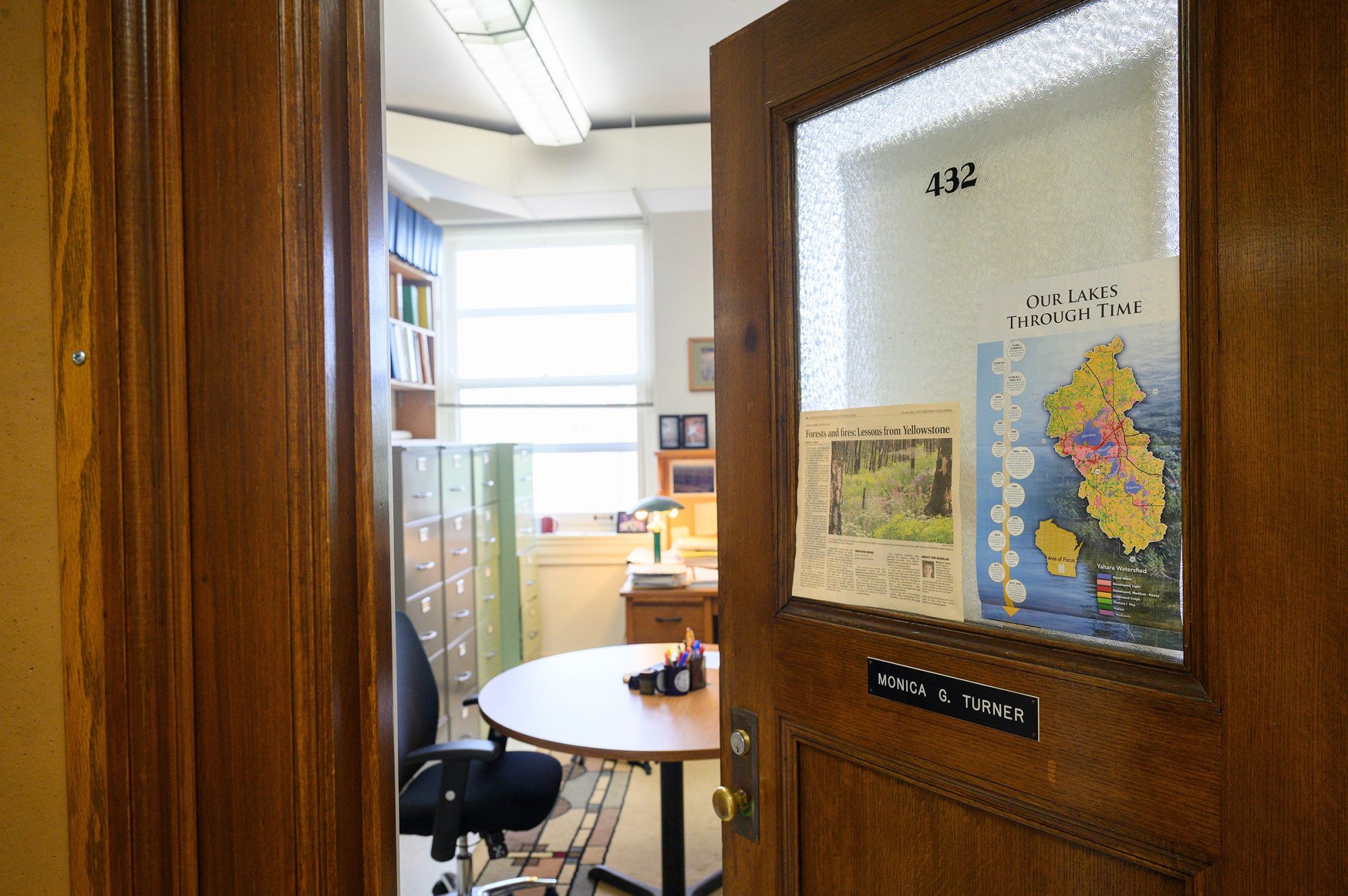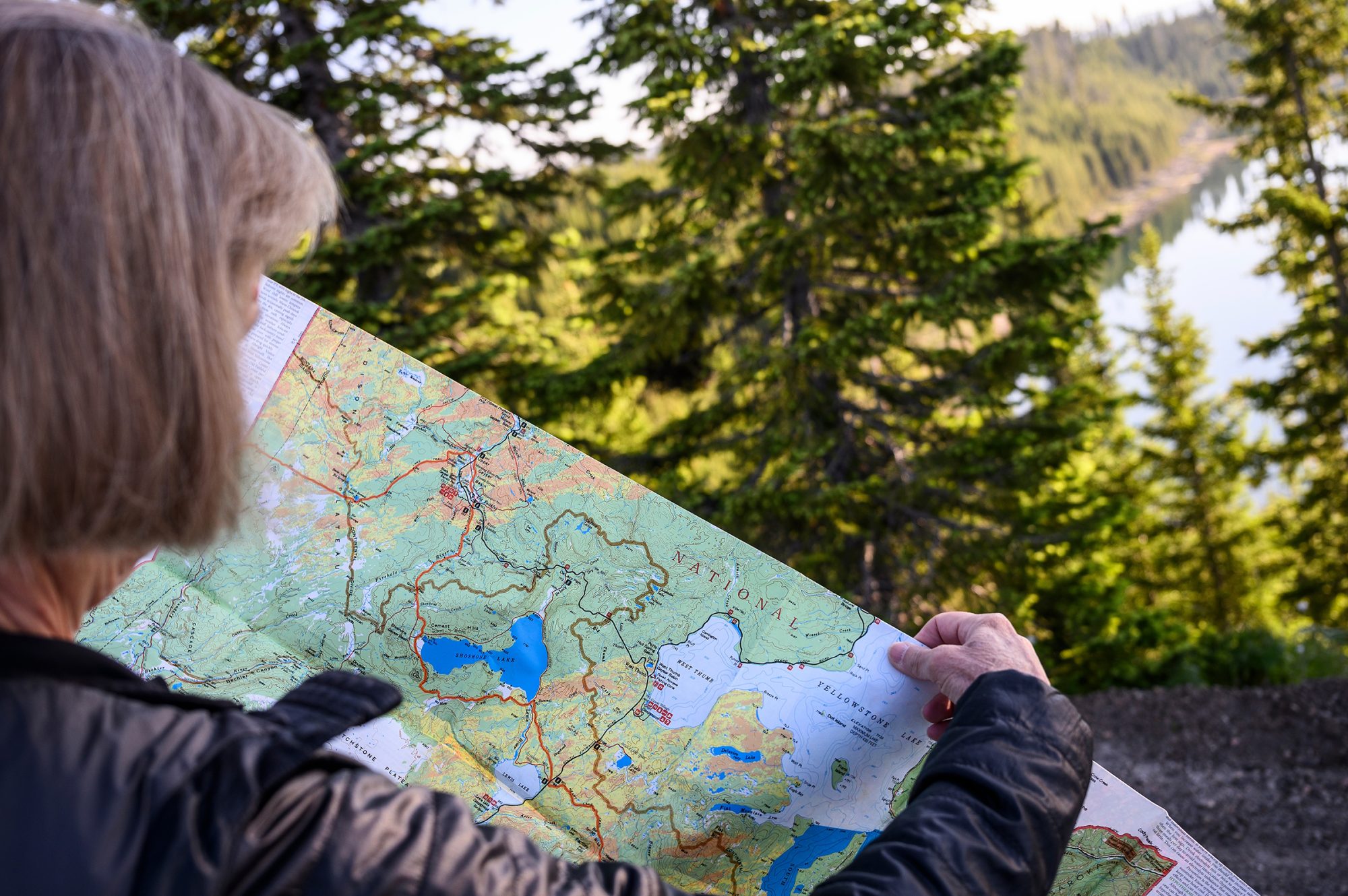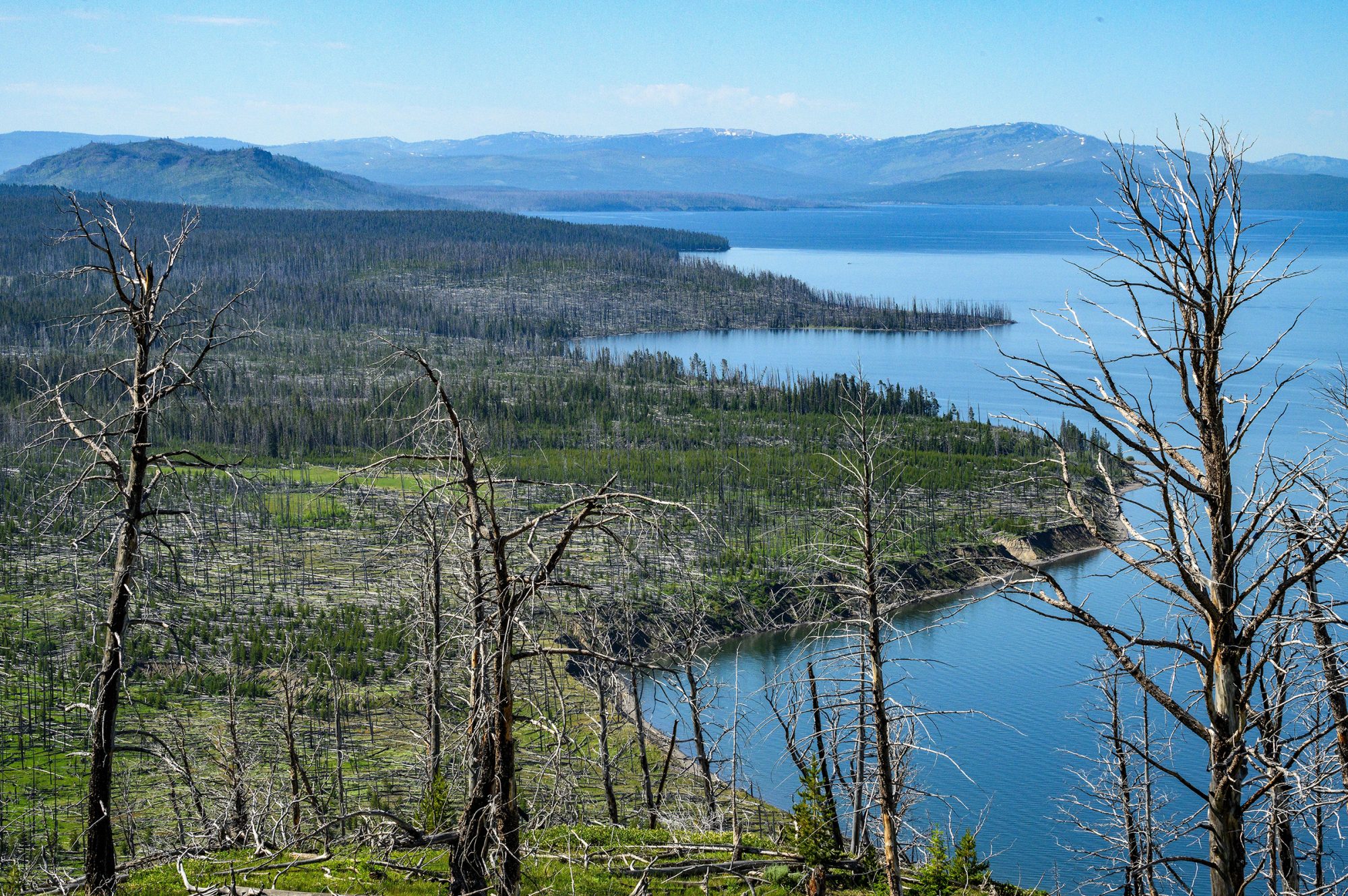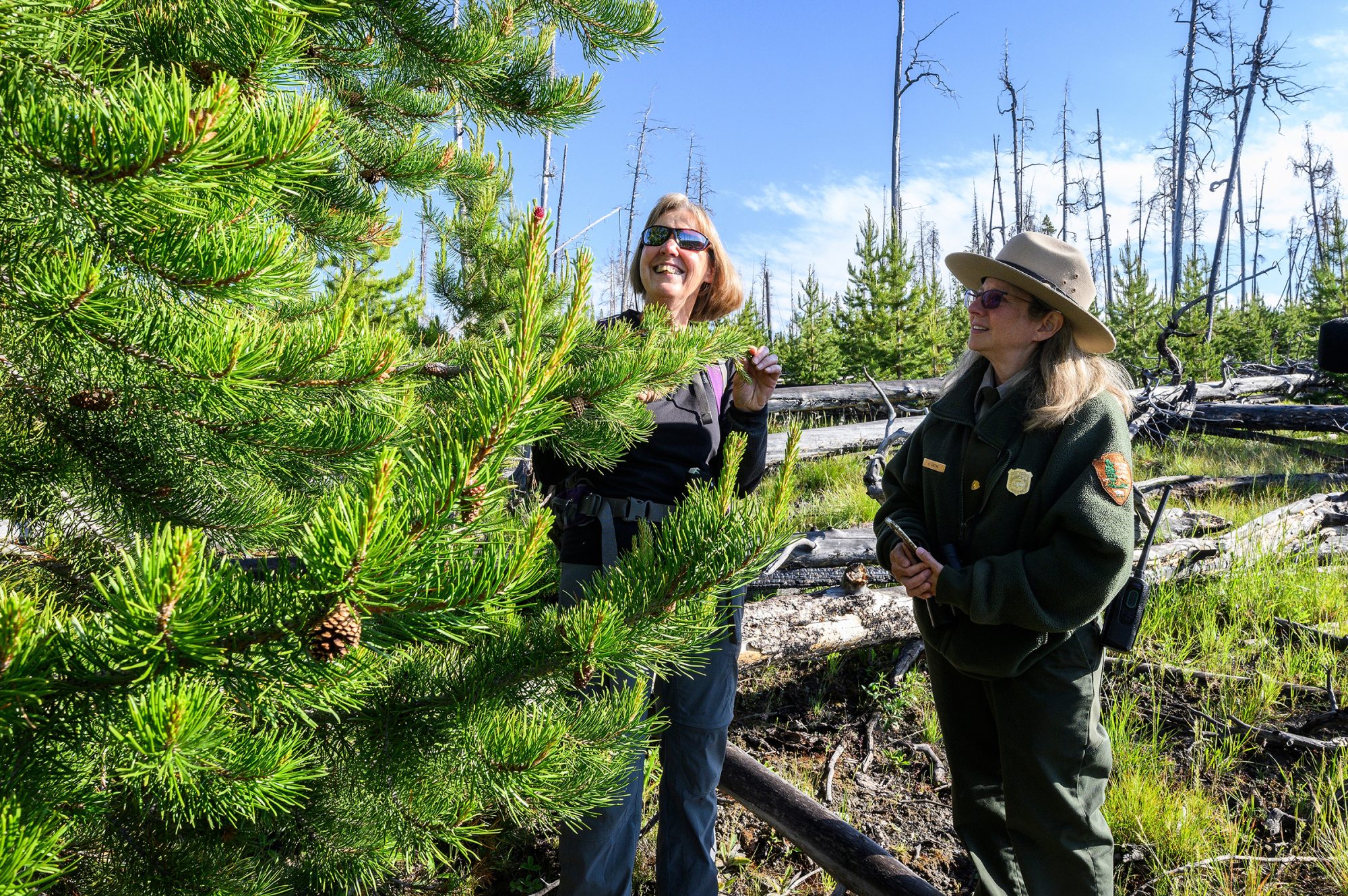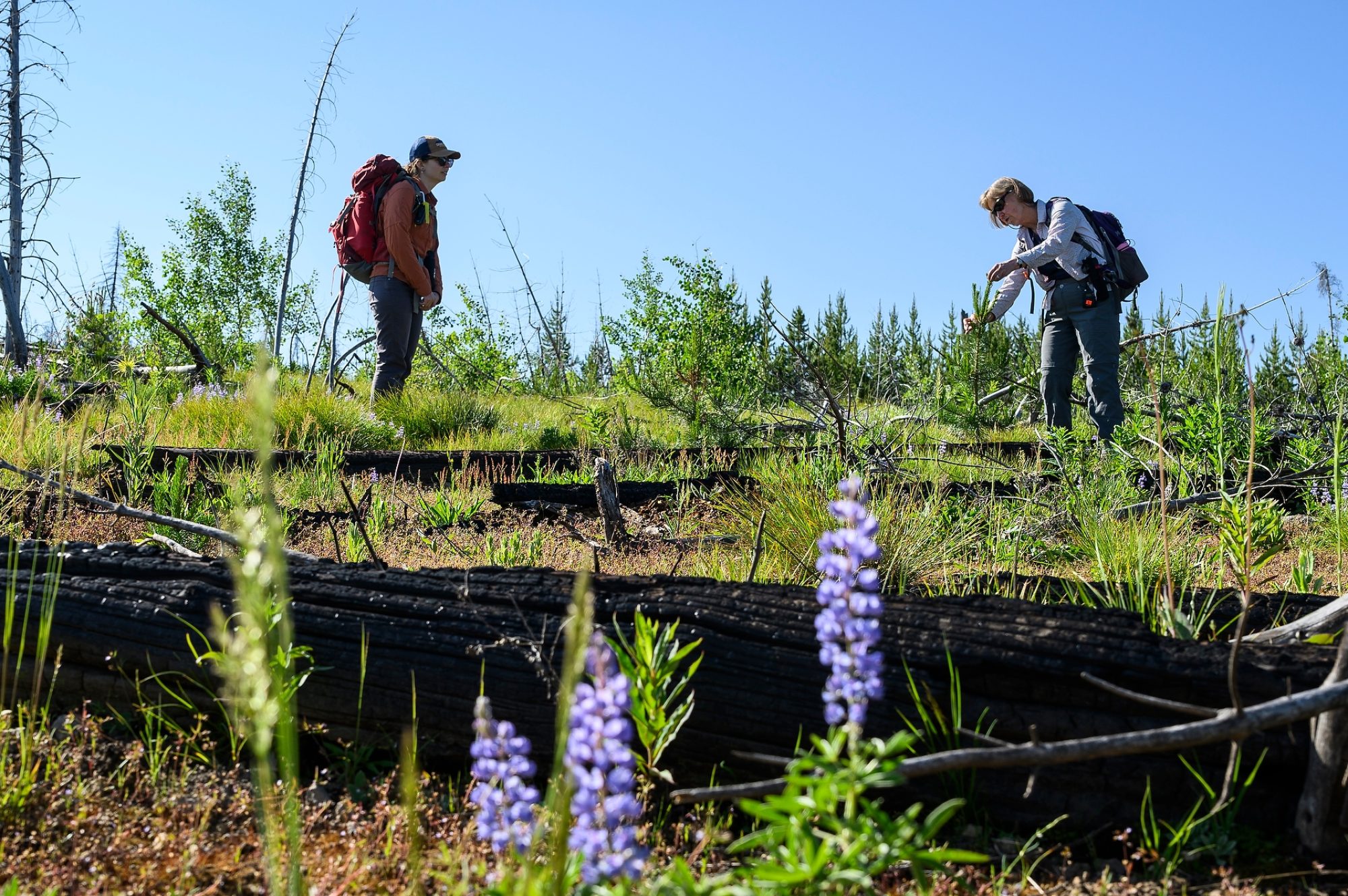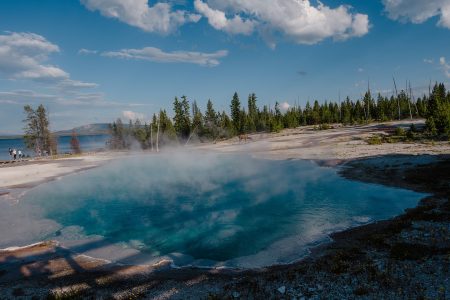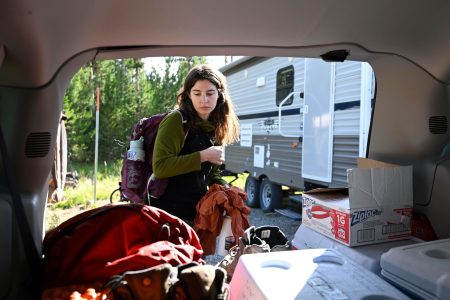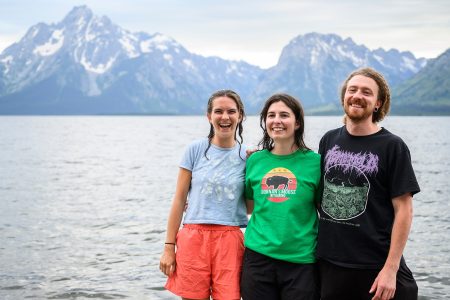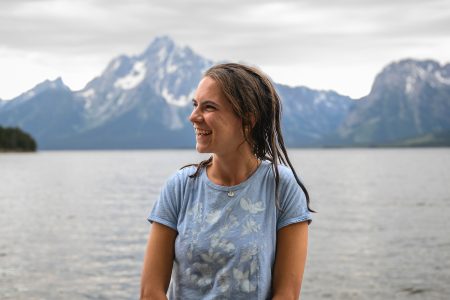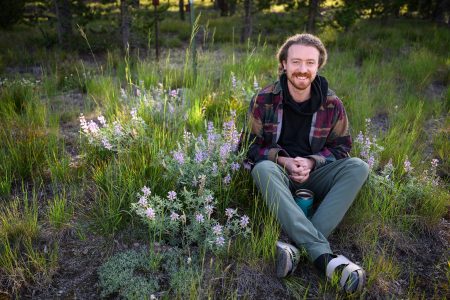Monica Turner has been a professor at UW–Madison since 1994. She has trained more than 100 students over the years, involving them in her research at Yellowstone. She has literally written the textbook on the field of landscape ecology, a fact not lost on those who work with her.
Though her Madison office is 1,300 miles from the mountains of the Greater Yellowstone Ecosystem, Turner’s research keeps her connected to the landscape year-round.
“It started out as a friends and family affair,” said Turner. During her inaugural field season as a scientist a year after the 1988 fires swept through the parks, Turner's mom and husband joined her and her colleagues to collect the critical data.
Though her Madison office is 1,300 miles from the mountains of the Greater Yellowstone Ecosystem, Turner’s research keeps her connected to the landscape year-round. “It started out as a friends and family affair,” said Turner. During her inaugural field season as a scientist a year after the 1988 fires swept through the parks, Turner's mom and husband joined her and her colleagues to collect the critical data.
Yellowstone National Park is the heart of the Greater Yellowstone Ecosystem, a 22-million-acre landscape that also includes Grand Teton National Park, diverse wildlife, alpine lakes, thick forests and a rich cultural heritage. Turner’s studies have taken her to some wildly remote areas, sometimes reachable only by boat or extensive hikes.
“The Yellowstone landscape remains one of my absolute favorite places on the planet. As a scientist, it’s just been an absolute privilege to be able to study this system,” she says.
Yellowstone National Park is the heart of the Greater Yellowstone Ecosystem, a 22-million-acre landscape that also includes Grand Teton National Park, diverse wildlife, alpine lakes, thick forests and a rich cultural heritage. Turner’s studies have taken her to some wildly remote areas, sometimes reachable only by boat or extensive hikes. “The Yellowstone landscape remains one of my absolute favorite places on the planet. As a scientist, it’s just been an absolute privilege to be able to study this system,” she says.
Amid the vast forests, valleys, rivers and mountains, visitors to Yellowstone are bound to come across evidence of fire. This view, from the Lake Butte Overlook in Yellowstone National Park, is where the East Fire burned 17,000 acres of forest in 2003. From up here, visitors can see the patchwork of young lodgepole pines following the pattern of fire and forest regeneration that has gone on for millennia.
“Fire is a natural part of the ecosystem,” says Turner. However, “with climate change, we are seeing an increase in the frequency, size and severity of forest fires. Our research shows that short-interval, severe fires will change the types of plants that can thrive in this landscape.”
Amid the vast forests, valleys, rivers and mountains, visitors to Yellowstone are bound to come across evidence of fire. This view, from the Lake Butte Overlook in Yellowstone National Park, is where the East Fire burned 17,000 acres of forest in 2003. From up here, visitors can see the patchwork of young lodgepole pines following the pattern of fire and forest regeneration that has gone on for millennia. “Fire is a natural part of the ecosystem,” says Turner. However, “with climate change, we are seeing an increase in the frequency, size and severity of forest fires. Our research shows that short-interval, severe fires will change the types of plants that can thrive in this landscape.”
National parks are important living laboratories where science and the public can all intersect. Kat Greene, interpretive ranger with the U.S. National Park Service, visits one of Turner’s research plots within the site of the Arnica Fire in Yellowstone National Park.
“This is a wonderful example of how the forest recovers naturally following a fire that is within its historical range of variability,” Turner says. “This was a very old stand when it burned in 2009." Turner explains, you can tell the age of the burnt trees by the height and the form of the old lodgepole pine that are here at the site.
As she looks at the new pines, she adds, “This came back like the forest has been doing for the past 10,000 years.”
National parks are important living laboratories where science and the public can all intersect. Kat Greene, interpretive ranger with the U.S. National Park Service, visits one of Turner’s research plots within the site of the Arnica Fire in Yellowstone National Park. “This is a wonderful example of how the forest recovers naturally following a fire that is within its historical range of variability,” Turner says. “This was a very old stand when it burned in 2009." Turner explains, you can tell the age of the burnt trees by the height and the form of the old lodgepole pine that are here at the site. As she looks at the new pines, she adds, “This came back like the forest has been doing for the past 10,000 years.”
But human-driven climate change is pushing Yellowstone into uncharted territory. A warming climate is causing hotter, drier summer weather, fostering fires. These climate conditions are predicted to be the new normal, meaning bigger and hotter fires can happen much more frequently than the ecosystem is used to.
Already, there are areas in the ecosystem where forests aren’t recovering as they once did. Sometimes, they’re not recovering at all.
This forest pictured here burned in 2000 and again in 2016. Today, wildflowers and grasses grow amid sparse young pines and aspen.
Says Turner, “The purple flowers that we see here are lupines, and they are nitrogen fixers. So, they're also helping to enrich the soil again and enrich the ecosystem. In this area, there are many fewer lodgepole pines and more aspen. In the future, it's probably going to be a nice, open sort of forest. More like a woodland than a dense forest.”
But human-driven climate change is pushing Yellowstone into uncharted territory. A warming climate is causing hotter, drier summer weather, fostering fires. These climate conditions are predicted to be the new normal, meaning bigger and hotter fires can happen much more frequently than the ecosystem is used to. Already, there are areas in the ecosystem where forests aren’t recovering as they once did. Sometimes, they’re not recovering at all. This forest pictured here burned in 2000 and again in 2016. Today, wildflowers and grasses grow amid sparse young pines and aspen. Says Turner, “The purple flowers that we see here are lupines, and they are nitrogen fixers. So, they're also helping to enrich the soil again and enrich the ecosystem. In this area, there are many fewer lodgepole pines and more aspen. In the future, it's probably going to be a nice, open sort of forest. More like a woodland than a dense forest.”
The ground is soft underfoot as Turner steps into a patch of old growth forest along the shores of Yellowstone Lake. She’s lost in a quiet admiration as she winds her way among the lofty trees. Calypso orchids grow in the patches of sunshine that filter down to the forest floor.
Turner rests her hand on the gnarled bark of a 300-year-old Engelmann spruce and says, "These are some of the forests that we're losing as the climate changes and fire activity increases."
The ground is soft underfoot as Turner steps into a patch of old growth forest along the shores of Yellowstone Lake. She’s lost in a quiet admiration as she winds her way among the lofty trees. Calypso orchids grow in the patches of sunshine that filter down to the forest floor. Turner rests her hand on the gnarled bark of a 300-year-old Engelmann spruce and says, "These are some of the forests that we're losing as the climate changes and fire activity increases."
